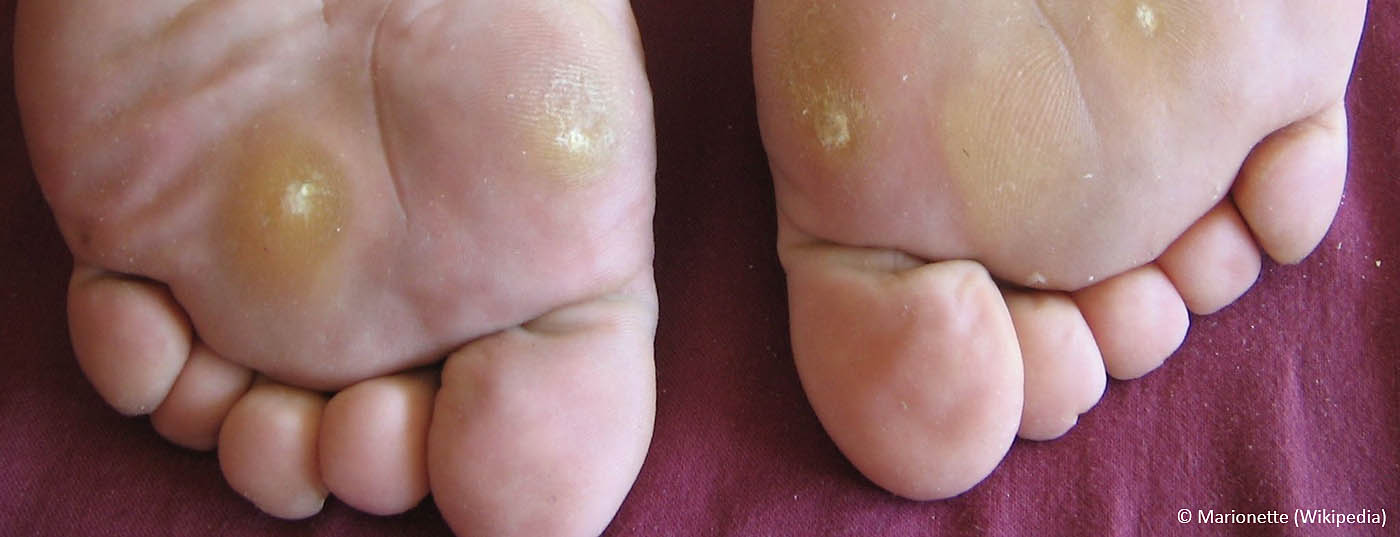In an interview with DERMATOLOGIE PRAXIS, Med. pract. Daniel Fleisch, Dermatologisches Ambulatorium Triemli, on the etiology and the numerous ways warts can be treated. It provides information on when therapy for vulgar warts is indicated at all and addresses tissue destruction procedures as well as immunomodulatory and antiviral approaches. Last, he talks about the recurrence problem and the rare presentation of generalized verrucosis.
Mr. Fleisch, human papillomaviruses are crucial for the etiology, what behavioral measures do you advise patients to avoid contact infections?
Med. pract. Meat: In the past, visits to public facilities (swimming pools, saunas, communal showers, etc.) were considered to be the main risk factor for acquiring warts. A recent publication puts this mode of transmission into perspective and proved that family members with warts are the most important risk factor, ahead of schoolmates with warts.
Both transmission routes have a much higher priority than any other environmental factors. Therefore, the authors recommend that more focus be placed on the transmission of HPV by family members or schoolmates and that, for example, existing warts in family members be covered.
Warts caused by a viral infection are in principle self-limiting. Nevertheless, there are an extraordinary number of ways in which they can be made to disappear: When is therapy indicated at all?
Vulgar warts represent a benign viral infection, which per se and due to the high spontaneous healing rate does not need to be treated. Therapy is indicated primarily when the warts result in pain or functional impairment. The indication for therapy in immunosuppressed patients should be generous.
Often, affected individuals see a doctor because of the cosmetic impairment. Or parents come to the consultation with their children suffering from warts because they fear a spread of the viral infection.
Regarding tissue destruction, which physical agent (cryotherapy, curettage, electrocoagulation, surgery, laser, photodynamic therapy) has the best scientific evidence based on current evidence?
The data situation with regard to current therapeutic measures is generally unsatisfactory. There is a lack of good randomized controlled trials comparing the efficacy of different treatments.
Of all the physical therapy modalities, cryotherapy has the best evidence. It is recommended by several authors as second-line therapy, immediately after the best-studied local therapy using salicylic acid. Based on research, liquid nitrogen therapy is recommended to be “aggressive” to be effective. According to a British study, photodynamic therapy is also considered to have a high level of evidence. The evidence for all other physical therapy methods is insufficient. Surgical excision should be consistently avoided, as therapeutic success is often frustrating and scarring is inevitable. Radiotherapy, which was once frequently used, is nowadays also considered obsolete in the treatment of warts.
What are the advantages of immunomodulatory or even antiviral therapeutic approaches?
The application of the immunomodulatory active Imiquimod represents a therapy alternative, which offers the advantage of a largely painless treatment. As a stand-alone therapy, it is rather ineffective, e.g., in the case of periungual warts in combination with prior laser ablation, the use of imiquimod can, however, be quite useful.
According to the literature, antiviral substances such as interferon or cidofovir are used in exceptional cases of therapy-resistant warts. Both substances, especially cidofovir, are associated with high therapy costs.
Have there been promising developments in the field of chemical destruction of warts (keratolytics, cytostatics, etching substances) in recent years?
There are numerous wart remedies on the market, which can be applied by the patient himself. Also new products often contain the same or similarly effective, mostly caustic ingredients, which do not show outstanding effect compared to the previous topicals.
What is there to say about the recurrence problem of the different methods?
Recurrences are generally exceedingly common, regardless of which therapy was used. Patients often suspend treatment too early in the belief of a supposed healing, which is often misinterpreted as “resistance to therapy” and results in a referral to the dermatologist. Patients should therefore be instructed to use the therapy for a sufficiently long time, true to the motto “better once too much than once too little”.
Generalized verrucosis is particularly distressing for the affected person. What forms of therapy are recommended here?
In the past, generalized verrucosis was used as a synonym of epidermodysplasia verruciformis Lewandowsky-Lutz. Today it is considered a separate entity and represents a form of generalized verrucosis. In addition, other genetic or immunodeficiency disorders are distinguished, which may result in diffuse HPV infection. Examples include patients with chronic lymphocytic leukemia, HIV patients, transplant recipients, hyper IgE syndrome, and Wiskott-Aldrich syndrome.
Therapeutically, the treatment is difficult for understandable reasons. Considering the generalization of warts, topical therapies are not very practical. The focus is on immunomodulatory therapies, according to a recent review paper. Apart from treatment, such patients must be regularly screened for skin neoplasia because of the oncogenic potential of “high-risk” HPV types (especially in transplant recipients and epidermodysplasia verruciformis).
Interview: Andreas Grossmann
DERMATOLOGIE PRAXIS 2014; 24(3): 38-39












